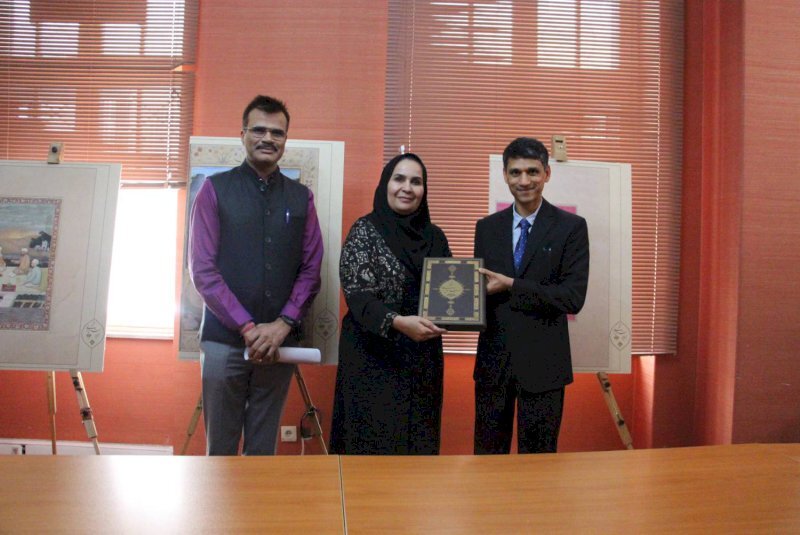Indian envoy visits UNESCO-tagged palace in Tehran

TEHRAN – Indian ambassador to Iran Rudra Gaurav Shresth paid a visit to the UNESCO-registered Golestan Palace in Tehran on Saturday.
He was accompanied by India’s Cultural Advisor Balram Shukla, CHTN reported on Sunday.
Ways to deepen and strengthen cultural relations between the two countries were emphasized during the meeting, the director of the World Heritage site Afarin Emami said.
The discussion also involved the organization of joint exhibitions in Golestan Palace, aiming to exchange cultural, literary, and artistic assets between Iran and India, she added.
A destination for domestic and international travelers, Golestan Palace is located in the heart and historic core of the Iranian capital. It was originally built during the Safavid dynasty (1501–1736) in the historic walled city.
Following extensions and additions, the palace complex received its most characteristic features in the 19th century, when it was selected as the royal residence and seat of power by the Qajar ruling family.
It was not only used as the governing base of the Qajar Kings but also functioned as a recreational and residential compound and a center of artistic production in the 19th century.
At present, the Golestan Palace complex consists of eight key palace structures mostly used as museums and the eponymous gardens, a green shared center of the complex, surrounded by an outer wall with gates. UNESCO has it that the complex exemplifies the architectural and artistic achievements of the Qajar era including the introduction of European motifs and styles into Persian art.
Golestan Palace features some 82,000 historical objects -such as royal utensils, vessels and jewelry pieces, carpets, and rugs- inside its many museums that add up to its charm.
ABU/AM
Leave a Comment